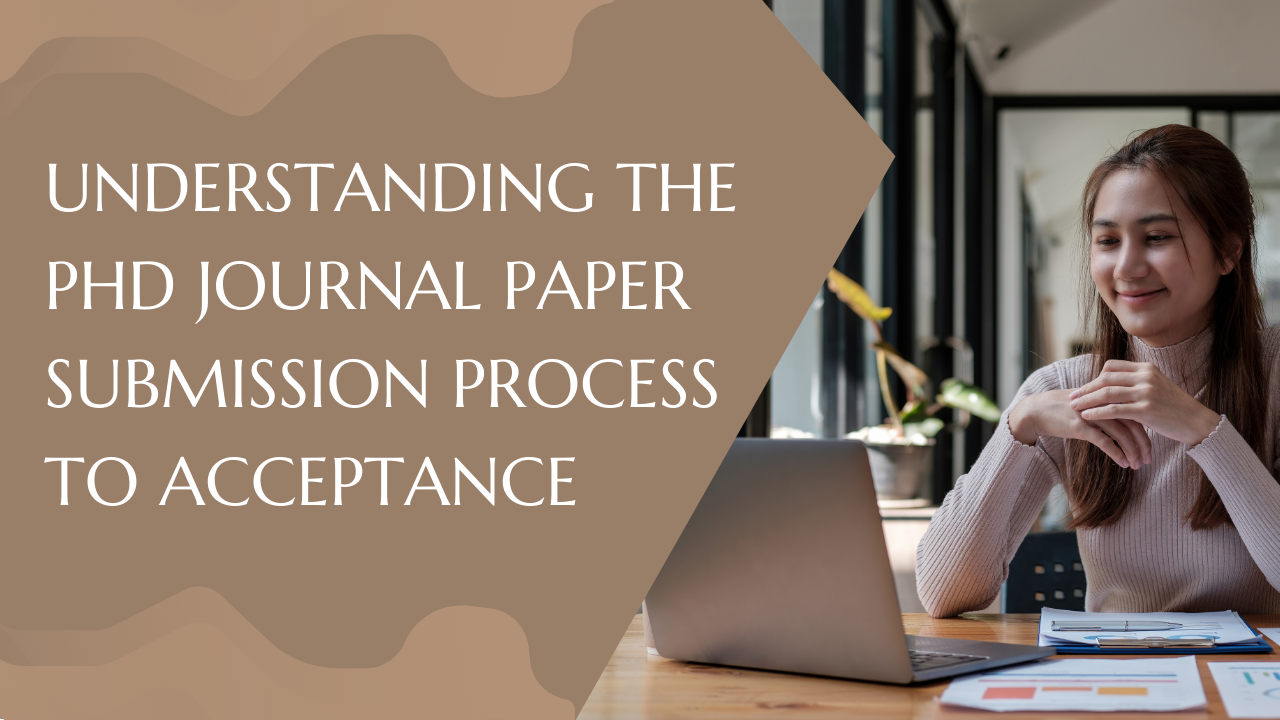Understanding the PhD Journal Paper Submission Process to Acceptance: A Comprehensive Guide
Kenfra Research - Shallo2025-02-10T16:53:05+05:30Submitting a PhD journal paper is a crucial milestone in a researcher’s academic journey. From drafting your manuscript to the final acceptance, this process is often daunting and requires careful attention to detail. Understanding each step of the PhD journal paper submission can help you navigate the submission process smoothly and increase your chances of acceptance. In this comprehensive guide, we’ll take you through the stages of PhD journal paper submission, from initial submission to final acceptance.

Preparing Your Manuscript
The first step in submitting your PhD journal paper is to ensure your manuscript is in top shape. This involves:
- Research Quality: Ensure that your research contributes original insights to your field. Your paper should address a significant research gap and present findings that are novel, reliable, and impactful.
- Structure: Follow the typical structure for academic papers: Abstract, Introduction, Methodology, Results, Discussion, and Conclusion. Each section should be clear and concise, providing the necessary context and evidence.
- Formatting: Adhere to the specific formatting requirements set by the journal you are submitting to. This may include guidelines on citation style (e.g., APA, MLA, or Chicago), font size, margins, and section headings. Many journals provide a template or a set of instructions to guide authors.
Selecting the Right Journal
Choosing the right journal for your paper is essential for success. Consider the following factors:
- Scope and Audience: Ensure the journal’s focus aligns with your research. Review the journal’s aims and scope to determine if your work fits.
- Impact Factor: The impact factor of a journal is often used as an indicator of its prestige. While publishing in high-impact journals may be competitive, it can significantly enhance the visibility of your work.
- Review Process: Some journals have a more rigorous peer-review process than others. Understand the review process and timelines to make an informed decision about where to submit your paper.
Submitting Your Manuscript
Once your paper is ready and you’ve chosen the journal, it’s time to submit your manuscript. This usually involves:
- Online Submission System: Most journals now use an online submission system. You’ll need to create an account, fill out submission forms, and upload your manuscript and any supplementary materials (such as figures, tables, or appendices).
- Cover Letter: A cover letter is often required when submitting your paper. This letter should briefly summarize the main findings of your research and explain why your paper is a good fit for the journal.
- Ethical Considerations: Some journals may ask you to confirm that your work adheres to ethical standards, including issues related to plagiarism, conflict of interest, and ethical approval for research involving human or animal subjects.
Peer Review Process
Once your paper is submitted, it will be sent to experts in the field for peer review. This is one of the most critical stages in the process, as reviewers will evaluate the quality, relevance, and novelty of your research. The review process can take several weeks or even months. There are several possible outcomes:
- Accept: The paper is accepted without major revisions.
- Minor Revisions: Reviewers suggest minor changes, which you can address relatively quickly.
- Major Revisions: Significant revisions are required, and you’ll need to make substantial changes to your manuscript before resubmitting.
- Reject: The paper is rejected if the reviewers find major flaws that cannot be addressed or if it is not a good fit for the journal.
Responding to Reviewer Comments
If your paper is not outright rejected, you will receive reviewer comments. Responding to these comments professionally and thoroughly is crucial:
- Be Transparent: Address each comment made by the reviewers. If you agree with the suggestions, explain how you’ve incorporated them into the revised manuscript. If you disagree with a point, provide a clear and well-justified explanation.
- Revisions: Make the necessary revisions to improve your paper. This could involve clarifying certain points, adding additional data, or reorganizing sections of the paper. After making revisions, you’ll need to resubmit your manuscript.
Acceptance and Publication
Once your paper has passed the peer review process, it is accepted for publication. However, the journey doesn’t end there:
- Final Proofreading: Before publication, you may be required to proofread the final version of your paper to check for any remaining errors.
- Publication Fees: Some journals charge publication fees (also known as Article Processing Charges or APCs). Make sure you understand any associated costs before submitting your paper.
- Online First Publication: Many journals offer online-first publication, meaning your paper will be published online before appearing in print. This allows for quicker dissemination of your research findings.
Promoting Your Published Paper
Once your paper is published, it’s time to make sure it reaches the right audience:
- Share on Social Media: Promote your work on academic platforms like ResearchGate, LinkedIn, or Twitter. Tag the journal and use relevant hashtags to increase visibility.
- Present at Conferences: Present your findings at academic conferences to gain further recognition in your field.
- Cite Your Paper: Ensure you properly cite your paper in future research to enhance its academic impact.
Conclusion
The journey from PhD journal paper submission to acceptance can be challenging, but with proper preparation and persistence, you can navigate it successfully. From carefully selecting the right journal to responding to reviewer comments and promoting your published work, each step of the PhD journal paper submission is critical to ensuring the success of your paper. Remember, the academic publishing process is competitive, but by adhering to best practices in PhD journal paper submission, you can increase your chances of having your research accepted and published.
Kenfra Research understands the challenges faced by PhD scholars and offers tailored solutions to support your academic goals. From topic selection to advanced plagiarism checking.









Leave a Reply